Intel Xeon E-2224 Benchmarks
For this exercise, we are using our legacy Linux-Bench scripts which help us see cross-platform “least common denominator” results we have been using for years as well as several results from our updated Linux-Bench2 scripts. At this point, our benchmarking sessions take days to run and we are generating well over a thousand data points. We are also running workloads for software companies that want to see how their software works on the latest hardware. As a result, this is a small sample of the data we are collecting and can share publicly. Our position is always that we are happy to provide some free data but we also have services to let companies run their own workloads in our lab, such as with our DemoEval service. What we do provide is an extremely controlled environment where we know every step is exactly the same and each run is done in a real-world data center, not a test bench.
We are going to show off a few results, and highlight a number of interesting data points in this article.
Python Linux 4.4.2 Kernel Compile Benchmark
This is one of the most requested benchmarks for STH over the past few years. The task was simple, we have a standard configuration file, the Linux 4.4.2 kernel from kernel.org, and make the standard auto-generated configuration utilizing every thread in the system. We are expressing results in terms of compiles per hour to make the results easier to read:
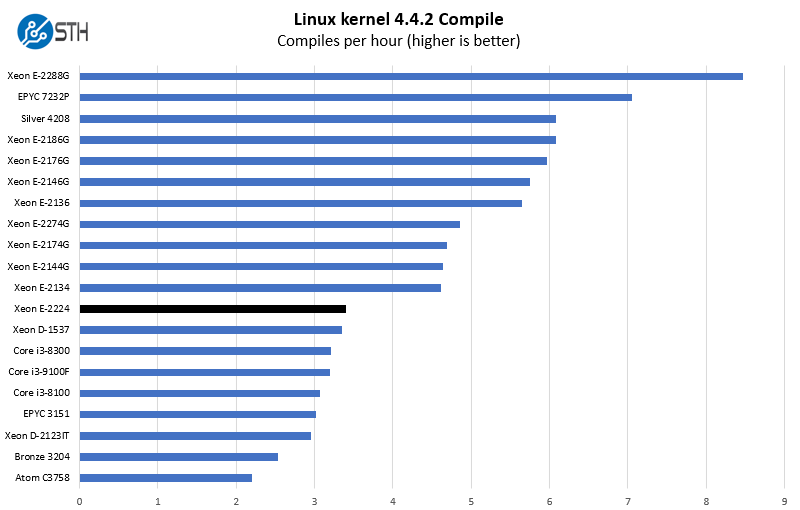
Here the lack of hyper-threading limits performance versus the previous generation 4 core, 8 thread Intel Xeon E-2134. One will see this large gap often over the course of this review.
c-ray 1.1 Performance
We have been using c-ray for our performance testing for years now. It is a ray tracing benchmark that is extremely popular to show differences in processors under multi-threaded workloads. We are going to use our 8K results which work well at this end of the performance spectrum.
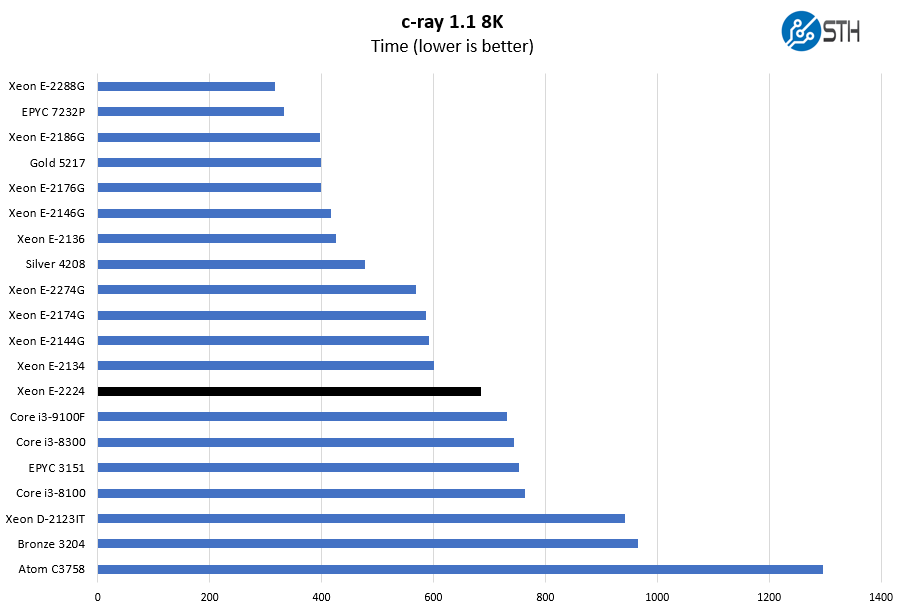
High clock speeds matter, which is why we can see this 4 core/ 4 thread part perform better than embedded parts like the AMD EPYC 3151 and Intel Xeon D-2123IT even though those parts have 4 cores and 8 threads.
7-zip Compression Performance
7-zip is a widely used compression/ decompression program that works cross-platform. We started using the program during our early days with Windows testing. It is now part of Linux-Bench.
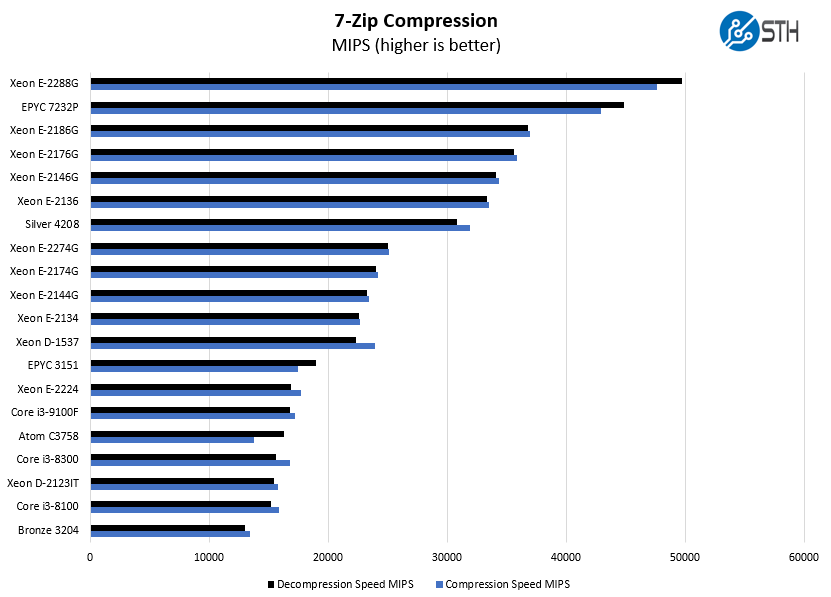
Looking again to the embedded side, we added Intel Atom C3758 results. Those have twice as many cores and lack hyper-threading, but run in lower power envelopes. The Intel Xeon E-2224 is generally faster, but often not by an extreme margin.
NAMD Performance
NAMD is a molecular modeling benchmark developed by the Theoretical and Computational Biophysics Group in the Beckman Institute for Advanced Science and Technology at the University of Illinois at Urbana-Champaign. More information on the benchmark can be found here. We are going to augment this with GROMACS in the next-generation Linux-Bench in the near future. With GROMACS we have been working hard to support Intel’s Skylake AVX-512 and AVX2 supporting AMD Zen architecture. Here are the comparison results for the legacy data set:
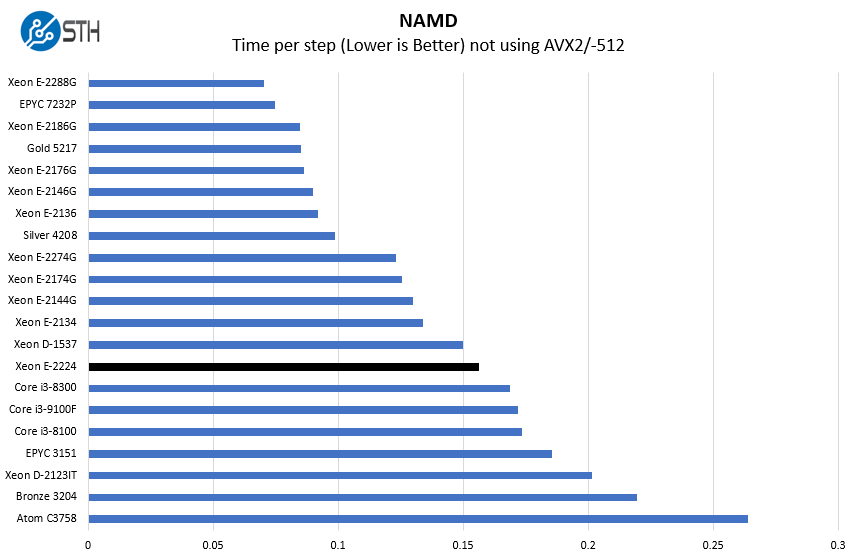
In some cases, the embedded Intel Xeon D-1537 with more cores and threads but significantly lower clock speeds, an older architecture, lower power consumption, and more features (e.g. 10GbE) can compete well with the Xeon E-2224. If you can handle the trade-offs, then the Xeon E-2224 is within striking distance of being an alternative.
Sysbench CPU test
Sysbench is another one of those widely used Linux benchmarks. We specifically are using the CPU test, not the OLTP test that we use for some storage testing.
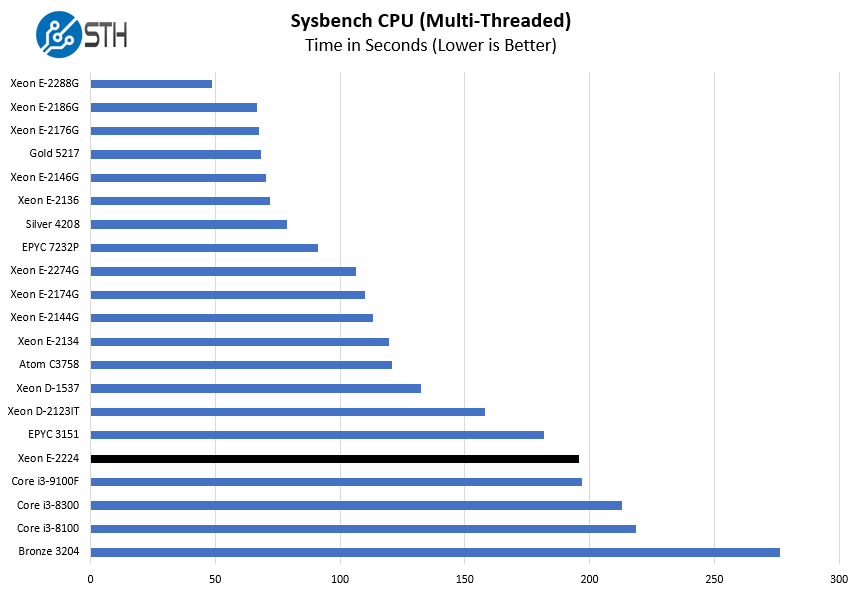
Again we see very similar performance between the Xeon E-2224 and Intel Core i3-9100F. As we expect, the E-2224 is faster, but the question is whether that delta is worth twice the cost.
OpenSSL Performance
OpenSSL is widely used to secure communications between servers. This is an important protocol in many server stacks. We first look at our sign tests:
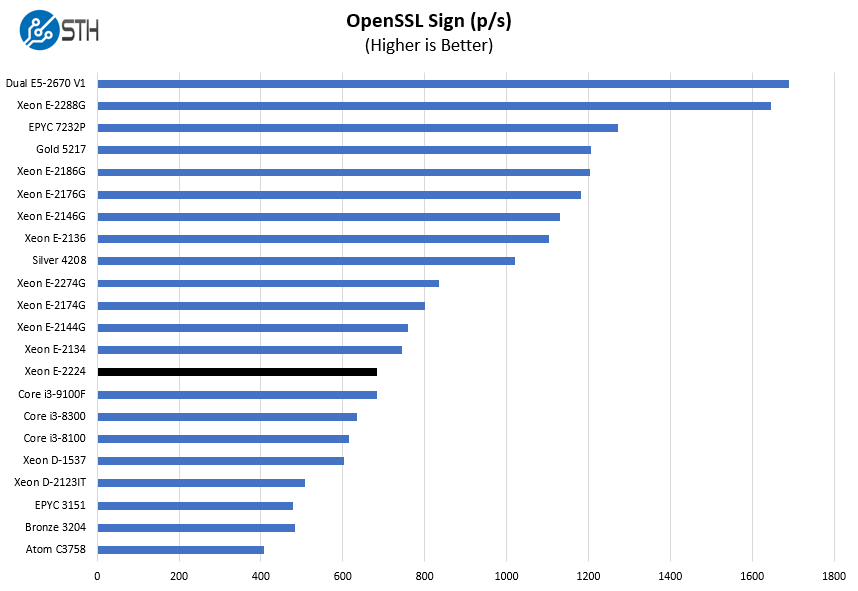
Here are the verify results:
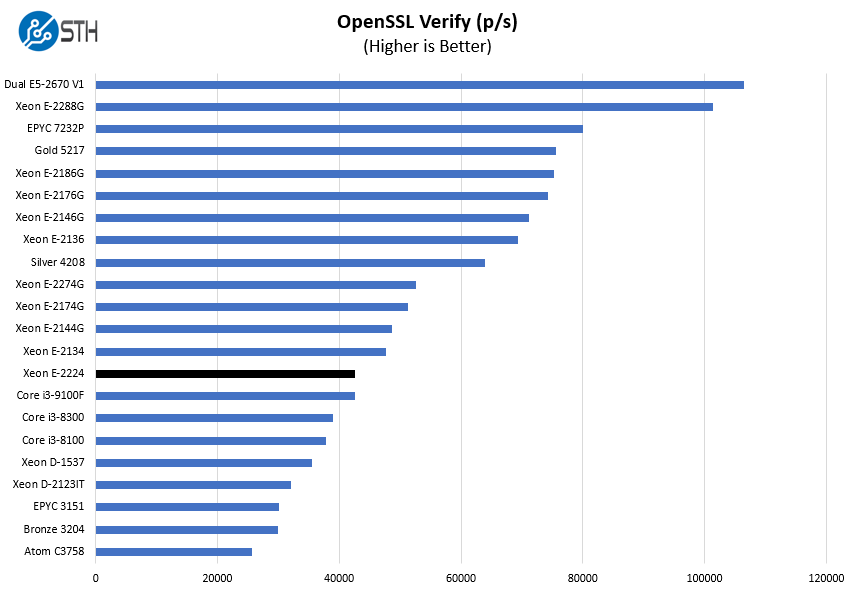
Whereas we see the Intel Xeon E-2288G compete with new market segments, the Intel Xeon E-2224 is mired in a comparison with the Core i3-9100F in this chart. It is interesting to see the top-end of the E-2200 line compete with other market segments while the Xeon E-2224 is in danger itself from other segments like the Core i3.
UnixBench Dhrystone 2 and Whetstone Benchmarks
Some of the longest-running tests at STH are the venerable UnixBench 5.1.3 Dhrystone 2 and Whetstone results. They are certainly aging, however, we constantly get requests for them, and many angry notes when we leave them out. UnixBench is widely used so we are including it in this data set. Here are the Dhrystone 2 results:
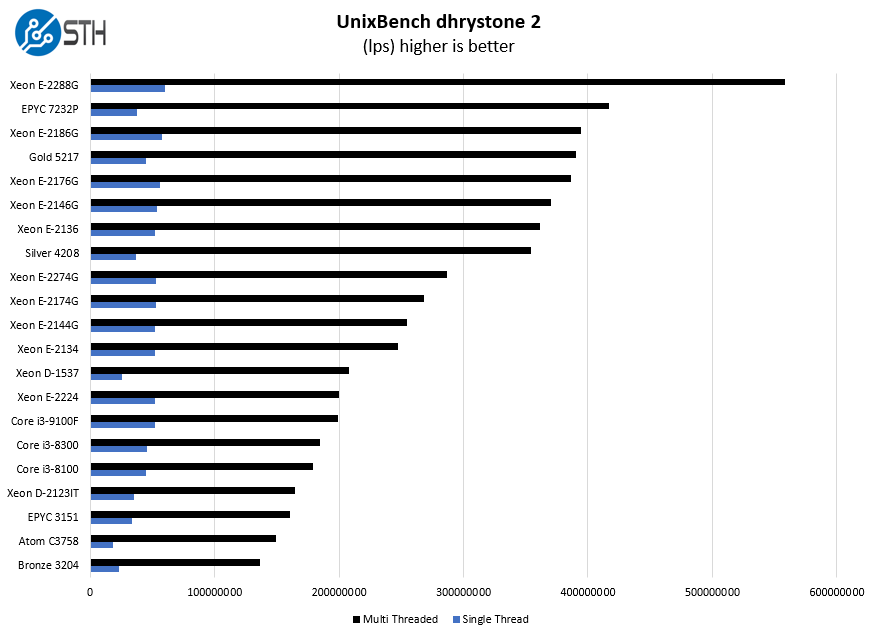
Here are the whetstone results:
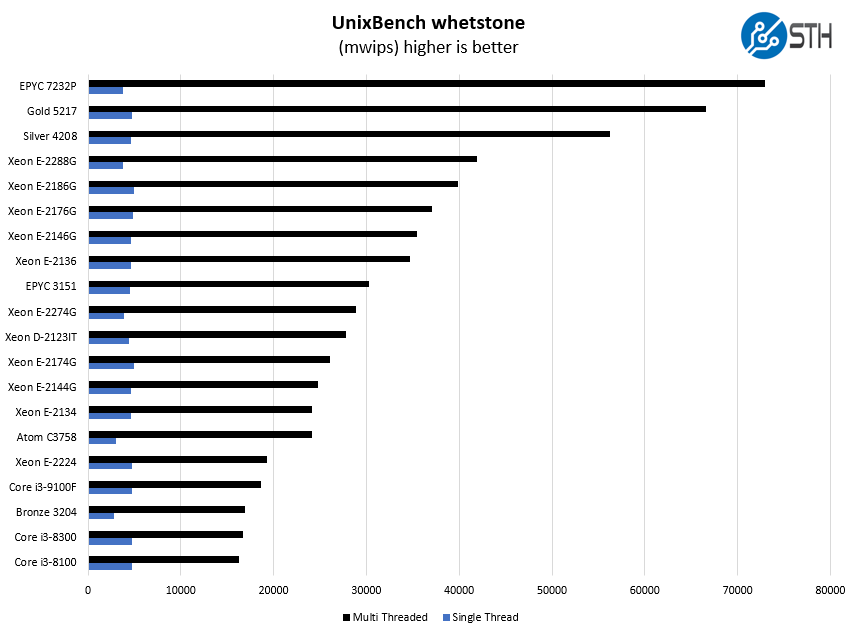
High clock speeds help here. If you are looking at something like a single 16GB or 32GB DIMM along with an Intel Xeon Bronze 3204 for a simple server, we think the Xeon E-2224 can make for a better choice at a lower initial and operating cost.
GROMACS STH Small AVX2/ AVX-512 Enabled
We have a small GROMACS molecule simulation we previewed in the first AMD EPYC 7601 Linux benchmarks piece. In Linux-Bench2 we are using a “small” test for single and dual-socket capable machines. Our medium test is more appropriate for higher-end dual and quad-socket machines. Our GROMACS test will use the AVX-512 and AVX2 extensions if available.
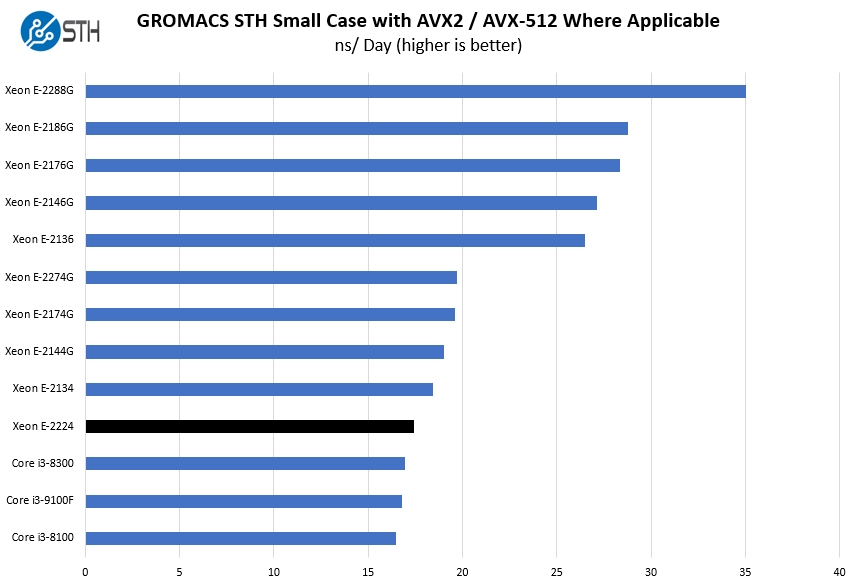
Here we are getting some, but not great benefits from Hyper-Threading so we see performance is relatively close to that of the Xeon E-2274G.
Chess Benchmarking
Chess is an interesting use case since it has almost unlimited complexity. Over the years, we have received a number of requests to bring back chess benchmarking. We have been profiling systems and are ready to start sharing results:
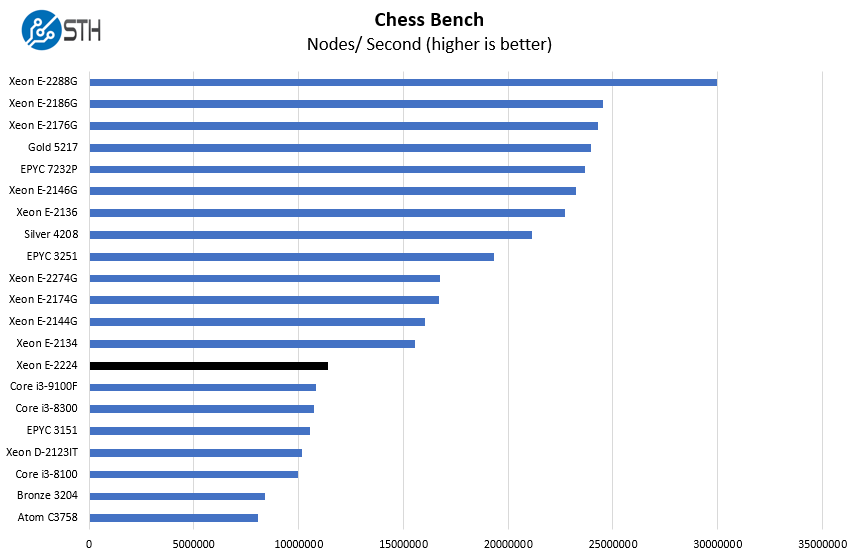
Our chess benchmarking shows a step function based on core and thread counts. This is one, again, where Intel limiting parts to 4 threads really hampers performance.
Next, we are going to have power consumption, market positioning, and our final words.




It’s a low end desktop CPU with ECC not fused off. AMD should certify ECC on the 2400G and 3400G just to blow this toy out of the water.
This is so sad about Ryzen. :(
I happen to really like the ASrack board, 65W Ryzen 7, and ECC RAM setup I have. It’s a great server for modest applications.
“By this chart, the Xeon E-2224 is one of the most expensive chips in the range.”
That doesn’t make sense, though. The E-2274G was criticised for being low on it. Higher is better, so only the E-2236 and E-2226G are better.